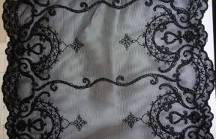During this video Pablo Romero gives an insight in the laser-based assessment called ALPS.
ALPS - Vision based laser cutting of patterned fabrics

Challenge
The major goal of ALPS is a machine vision system that alleviates fixing and positioning requirements of highly deformable and patterned fabrics and enables cutting without any prior marking. The overall aims are to decrease cost and complexity of the fixing system, to increase cutting performance and overall throughput for all relevant batch sizes, while ensuring high system usability and reliability.
Benefit
The ALPS approach removes the need to produce cutting dies for the production of clothes. It aims at a machine vision-based cutting system capable of instantly producing different pieces by a simple design and transfer procedure.
Vision guidance greatly reduces positioning requirements for deformable fabrics of variable thread thickness. ALPS will demonstrate the capability of machine vision to cope with fabric deformation, thread thickness and lace positioning and guide the laser beam while controlling laser parameters. This will extend the current machine market to a new breed of machines for flexible and individualised manufacturing. Textile industry as the user will have the opportunity to adopt laser cutting for deformable decorated fabrics at virtually no extra cost. Increased productivity, improved production rate and enhanced quality control are accompanied by waste reduction and the ability to offer individualised products at competitive cost, even at a batch size of one.
Achievement
For SIMPAUPRO, the Laser-Based Equipment Assessment (LEA) has already brought enormous success. A machine vision system has been developed, validated, and integrated into a commercial laser robot cell. This system makes a straightforward offline graphical programming of the laser cutting process. During online operation it takes control of the process, aligning CAD models of pieces and the lace to cut and adapt the laser parameters to the local properties of the particular lace cut. A highly efficient user interface has been developed, allowing the user to align the contour with lace image. On top of that, end-user SELMARK and supplier SIMPAUPRO have consolidated their competitiveness in their respective fields. SELMARK expects to reduce current fabric waste in semiautomatic operations by 55%, thus immensely lowering cost and overall material waste. Also, worker productivity improves by a factor of 2-4. Supplier SIMAUPRO integrates the technology for SELMARK and other textile companies, hence improving the current market by meeting its demands.
LEA Partners
| Supplier | User | Research Partner |
|---|---|---|
 |
 |
 |
 Fraunhofer Institute for Laser Technology ILT
Fraunhofer Institute for Laser Technology ILT